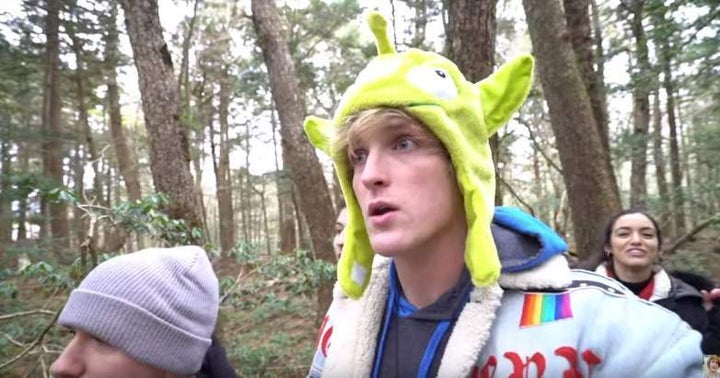
Vloggers have grown by the thousands as video sharing sites provide an ever increasing audience. Becoming your own kind of celebrity has never been easier. Of course, the challenge is to rise above the clutter. Vloggers pride themselves in pushing the limit in the creation of new content.
Theirs is no longer exclusively an exercise in vanity. Filming their daily lives no longer cuts it. Viewers demand substance on one end. Scandal on the other. Of course, problems arise when the two are conflated.
Enter Logan Paul. The “maverick” vlogger who has garnered even more attention than he has bargained for. The 22 year old has generated outrage over the internet for filming a hanged man in the Aokigahara, a forest at the foot of Mt. Fuji that has become the location of many suicides over the decades.
Most criticisms against the vlogger focus on his cavalier, almost comedic, reaction to such a serious topic. He attempts to balance this by reaching out, in a sincere and sober tone, to those struggling with depression. He even posts a suicide prevention hotline at the end of the vlog.
But his insistence on keeping the video raw and unfiltered raises the question of media ethics. Because, yes, Logan Paul is part of the media as unprofessional as he may be. Like the traditional press, he holds sway over a multitude of viewers -- he has 15 million followers to date, a number that I’m sure will rise after this latest publicity stunt.
Paul should be made aware that it’s not only his antics and insensitivity that deserves reproach. He has done something that causes considerably more damage. He has sensationalized suicide through his vlog. By scoring his video with sober, dramatic music. By showing overhead and panoramic shots of the Aokigahara and all its beauty. By showing the corpse of a hanged man, hours after his suicide, Paul has provided the means for his viewers to romanticize the taking of one’s life.
The danger of his actions cannot be underscored enough. In a New York Times article Mr. Yutaka Motohashi, director of the Japan Support Center for Suicide Countermeasures, laments the attention being drawn towards Aikogahara. He claims that it’s a “vicious cylce” as people come to the forest “because it’s a famous location.” The support center urges media to avoid providing details of locations of even attempted suicides in conjunection with the World Health Organization’s (WHO) guidelines.
The guidelines can be found in WHO’s 2008 journal that also warns that “prominent placement and undue repetition of stories about suicide are more likely to lead to imitative behaviours than more subtle presentations.”
Adding to this, Paul directly violates another guideline that urges media to avoid “overplaying the number of incidents occurring at [suicide sites].”
His portrayal of the Aokigahara as this “haunted” forest filled with the souls of those who have died in it reinforces its mystique. This plays to the overall depiction of Japan as the country that gave birth to “honorable” death in the bushido culture. Perhaps this is where Paul’s fascination for the Aokigahara originates.
It is worth noting, however, that according to the above-mentioned New York Times article, almost 60 percent of suicides in Japan take place at home. Moreover, according to the 2015 WHO report, the U.S.’s suicide rate of 12.6 per 100 thousand people isn’t too far off from Japan’s 15.4. Paul’s focus on the Aokigahara, again, strengthens his sensationalist portrayal of suicide.
Being a member of the media, Paul should also be held accountable to the same ethical standards journalists are subject to. Especially since he has chosen to talk about such a delicate topic as depression and suicide. His 15 million followers, it would be safe to assume, is comprised of millennials from across the world. This is a significant factor given that a 2015 WHO report states that among the youth aged 15 to 29, suicide is the second leading cause of death globally.
As vloggers take on more sophisticated subjects, they carry with them the responsibility imposed on traditional media to research well on their reports lest the truth gets muddled up or, worst, lives are put in peril. There is simply no place for sensationalism as far as these are concerned.